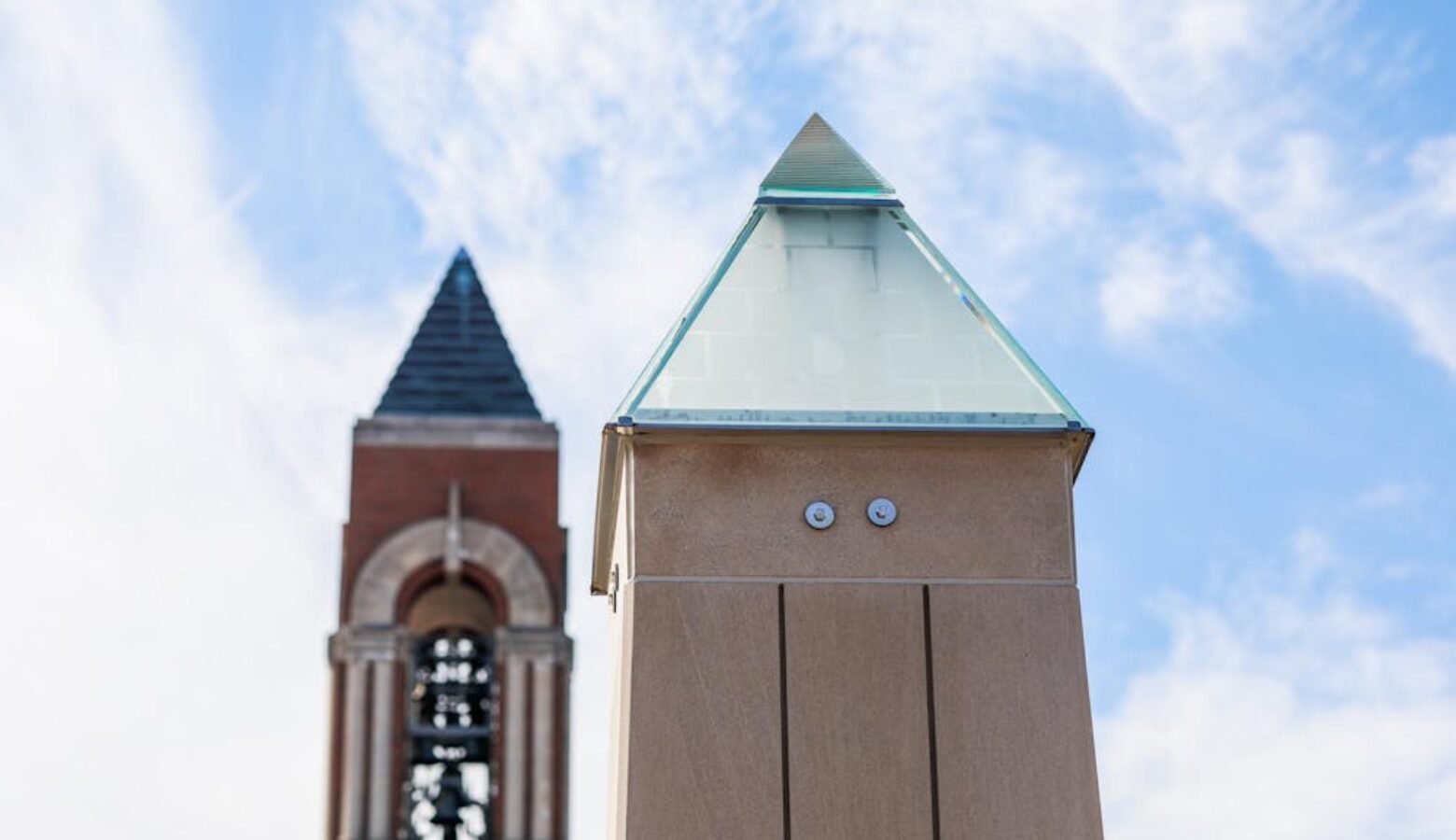Peace Plaza seeks to promote peace and inclusivity

The area where Ball State University’s new Peace Plaza stands, in University Green between the architecture building and the Whitinger Business Building, was once informally referred to as “the ashtray.”
“The pavement was all cracked around the landscape, and it was not maintained that well,” Lawrence “Larry” Gerstein, a psychology professor at Ball State, said.
Gerstein also serves as the director of the Center of Peace and Conflict Studies. The center’s mission on Ball State’s campus is to research conflict and provide outreach and support on the issue.
When Gerstein and the center’s advisory board started to explore the opportunity of a peace plaza on campus, they contacted Jim Lowe, associate vice president for facilities planning and management at Ball State.
“We created this for impact,” Lowe said. “It defines what we are as a campus in terms of our inclusiveness, responsibility and gratitude.”
Lowe’s hope for the Peace Plaza, currently under construction, is to be a place where students and community members alike can gather and have conversations about peace and violence.

The Center for Peace and Conflict Studies has been active on Ball State’s campus since 1988. The center offers a minor in peace studies and conflict resolution and awards the Cohen Peace Grant for Ball State faculty and graduate students toward research on peacemaking.
Originally, the purpose of the plaza was to hold events every April to honor people who died from events such as the Oklahoma City bombing April 19, 1995, and the Virginia Tech shooting April 16, 2007.
Gerstein said he believes a plurality of mass shootings and attacks happen in April, and he wanted to use the month to honor those people who died.
During April, the center holds events relating to nonviolence and peace. In the past, a flash mob for peace, the building of a temporary peace pole and creation of paintings/art for peace took place during what the center calls “Nonviolent April.” In April 2024, the center will host the Better World Student Peace Conference, where students can submit proposals to expand the understanding of a peaceful world.
In 2011, the center’s advisory board first brought up ideas for a peace plaza on campus; there was a desire for a permanent location.
Beth Messner, associate professor in communication studies and outreach coordinator for the Center of Peace, said other college campuses typically have places devoted to political discourse and peace relations.

“We started dreaming about what that would look like on Ball State’s campus,” Messner said.
Anthony Costello, professor emeritus of architecture, began to meet with members from the Center of Peace to discuss designs for a peace pole on campus. Costello then came back with the idea to expand beyond this original idea and make something bigger.
Currently, the Peace Plaza has one pillar up, which represents Indiana. The worksite plans call for seven additional, smaller pillars, which will represent the seven continents. The pillars will be made of granite and limestone sourced from Indiana, specifically the Bloomington area.
The pillars will also have the ability to light up at night, with the ability to cycle through three different colors at once. For example, on Homecoming weekend, the lights alternated between red and white.
Gerstein said the lights will be used to commemorate certain anniversaries and events as well.
However, as the Peace Plaza came to fruition, its scope and purpose changed.
He hopes those also see a place for tabling events, candlelight vigils and a space to bring awareness to social justice issues.
Lowe believes the plaza will become a popular gathering spot on campus.
“We’ve now created a spot that, for decades to come, is the designated spot on campus,” Lowe said.
The plaza has been funded by donations from the John W. Anderson Foundation, the college deans across Ball State, and the Office of the Provost and Executive Vice President for Academic Affairs. The amount raised so far has totaled $200,000.
Lowe said it would take “in the neighborhood” of another $200,000 to put up the other seven pillars. The site may also include flagpoles and plaques in the future.
“We may not be done [after we put up the pillars]. It may grow to something even more,” Lowe said. “That’s the beauty of this project.”
Contact Grayson Joslin with comments at Grayson.joslin@bsu.edu or on X @GraysonMJoslin.

